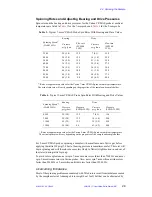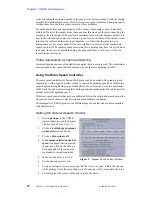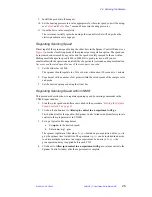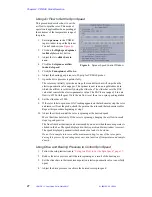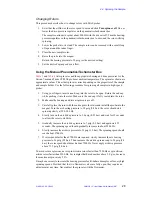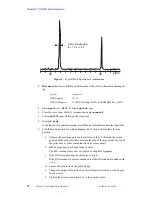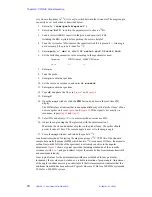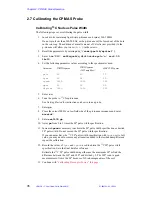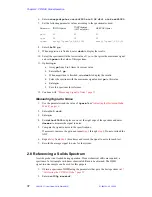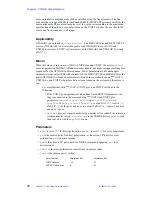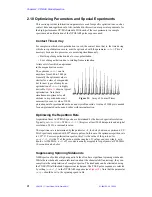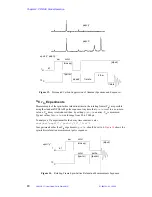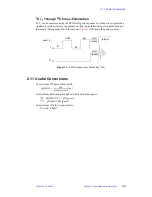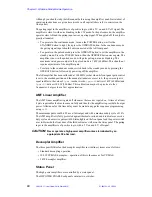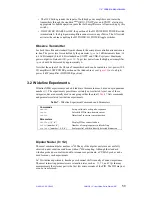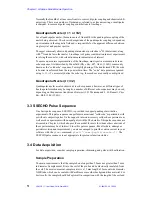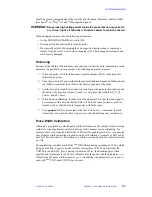
Chapter 2. CP/MAS Solids Operation
37
VNMR 6.1C User Guide: Solid-State NMR
01-999162-00 C0402
6.
Enter
crossp=dipolar cntct=2500 at=0.02 d1=1 nt=4 sw=45000
.
7.
Set the following parameter values according to the spectrometer used.
8.
Enter
lb=50 ga
.
9.
When acquisition is finished, enter
dssh
to display the results.
10. Select the spectrum with the lowest value of
tpwrm
that gives the maximum signal
and set
tpwrm
to the value of this spectrum.
11. Optimize
pw
.
a.
Array
pw
from 0 to 2 times its current value.
b.
Enter
d1=1 ga
.
c.
When acquisition is finished, enter
dssh
to display the results.
d.
Select the spectrum with the maximum signal and set
pw
to this value.
e.
Enter
ga
.
f.
Save this spectrum for reference.
“Measuring Signal to Noise,” page 37
Measuring Signal to Noise
1.
Use the parameters and the value of
tpwrm
from
.
2.
Enter
d1=5 nt=4
.
3.
Enter
ga
.
4.
Set
delta=10000
and place cursor at the right edge of the spectrum and enter
dnsmax
to measure the signal to noise.
5.
Compare the signal to noise to the specifications.
If necessary, increase the gain and repeat
through
. Do not overload the
ADC.
6.
Repeat
three times and record the signal to noise for each test.
7.
Record the average signal to noise for the system.
2.8 Referencing a Solids Spectrum
A solids probe is not locked during operation. If exact chemical shifts are required, a
spectrum of a test sample with know chemical shift must be obtained. The HMB
signal-to-noise sample can be used for this purpose.
1.
Obtain a spectrum of HMB using the parameters that gave the best spectrum in
“Calibrating the CP/MAS Probe,” page 35
2.
Enter
cr=100p movetof
.
Parameter
INOVAcpmas
INOVAcpmas
(1 kW amplifier)
MERCURYcpmas
gain
40
40
20
tpwr
60
54
63
tpwrm
array(‘tpwrm’,40,95,100)
array(‘tpwrm’,52,0,5)


